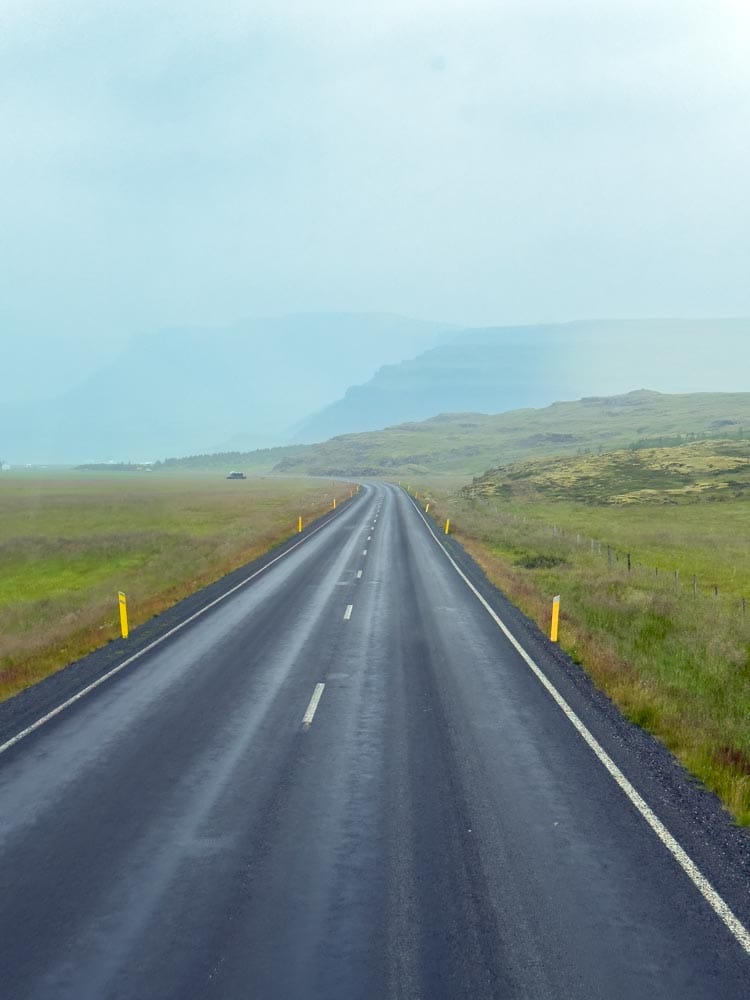
From 30kg of Laundry to 1000 Degrees of Lava

Sometimes our weeks start with fog and end with fire. Iceland is like that.
Fog and Dirty Socks: Escaping the North
We relocated our home-on-wheels because the weather up north had turned dramatically. Dense fog blanketed everything, refusing to lift. It was moody and mystical, but also kind of annoying. We had another mission: laundry. Full-time travel isn’t always waterfalls and drone shots. It also includes weekly docents kilograms of dirty socks.
A Stroll Through Reykjavik
Before diving into laundry duties, we took some time to explore Reykjavik. It’s easy to forget how much contrast a town can offer compared to the wild beauty of Icelandic nature. The city surprised us with colorful street art, bold modern architecture, and cozy cafés tucked between historical buildings. From the reflective glass façade of the new City Hall to murals that made us pause and smile, Reykjavik felt alive in a different way. It reminded us that amid all this beautiful nature, human creativity thrives, adding color and warmth to the island’s raw, rugged charm.
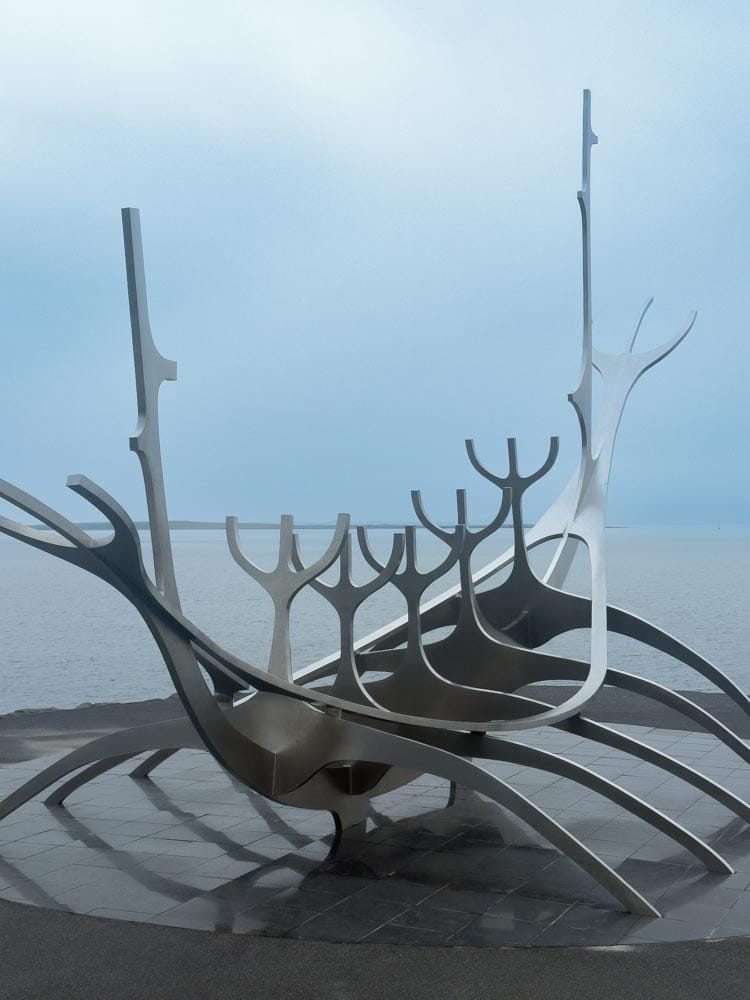
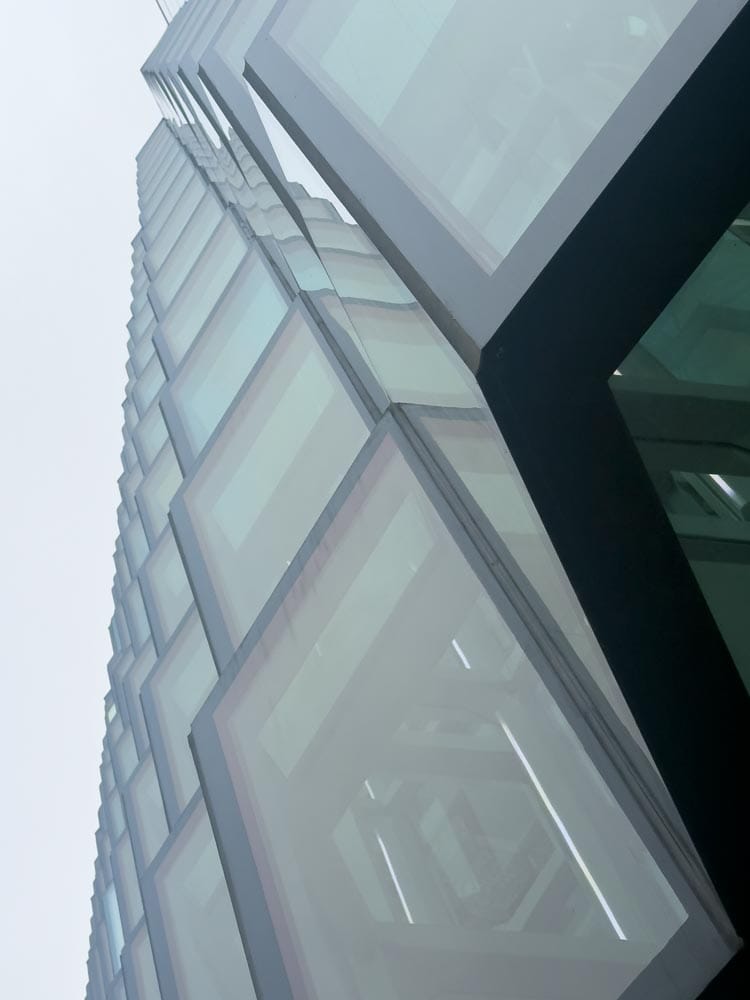
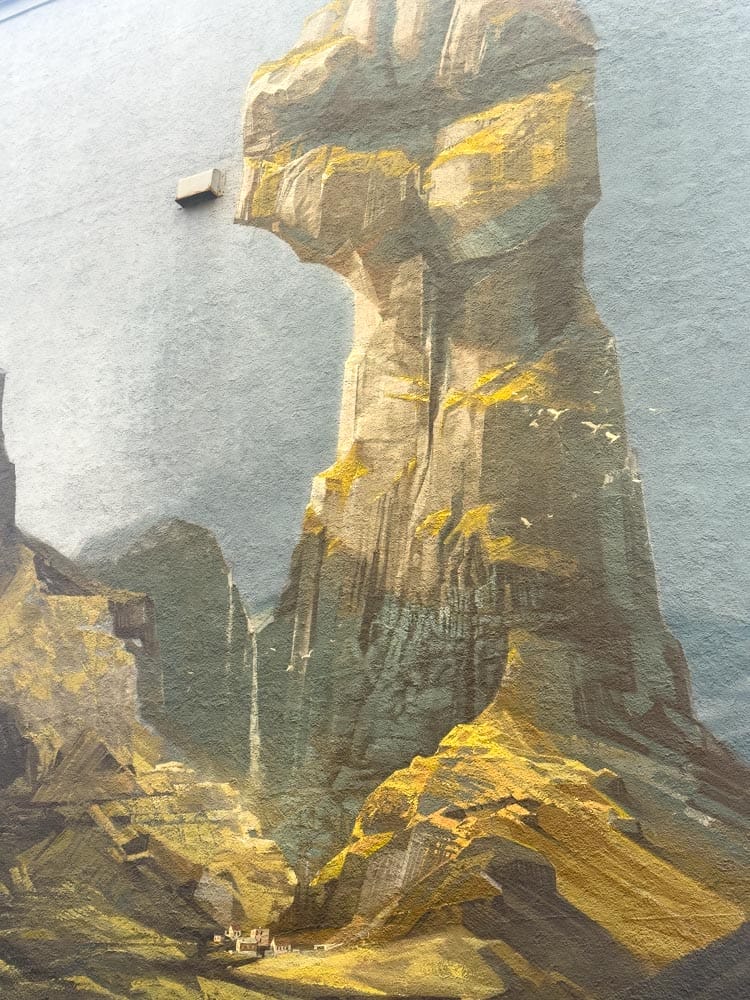
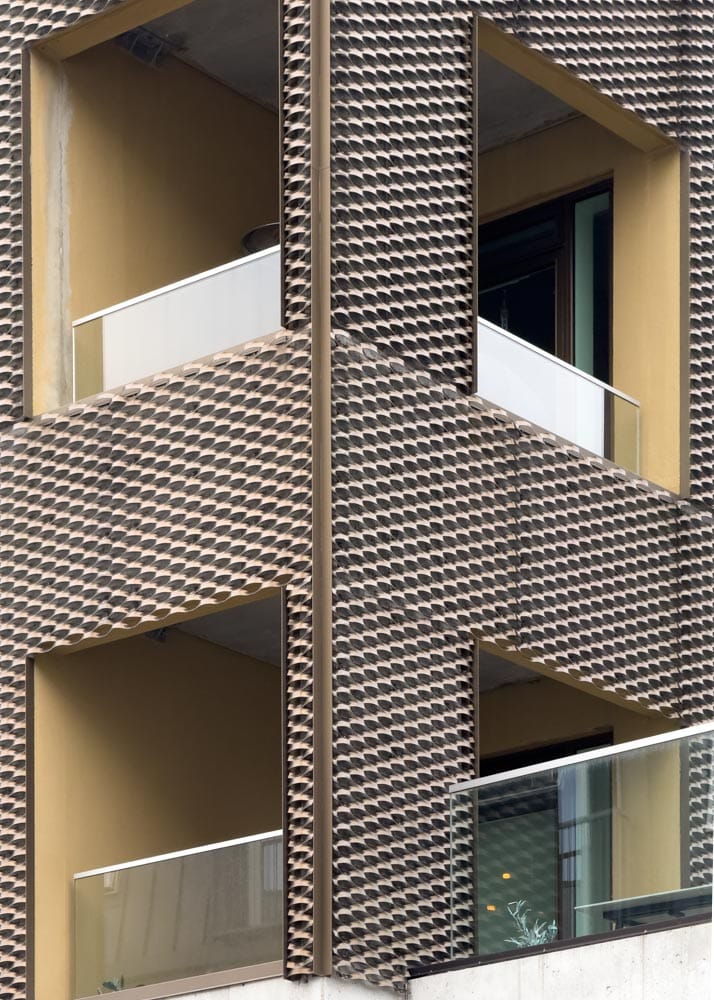
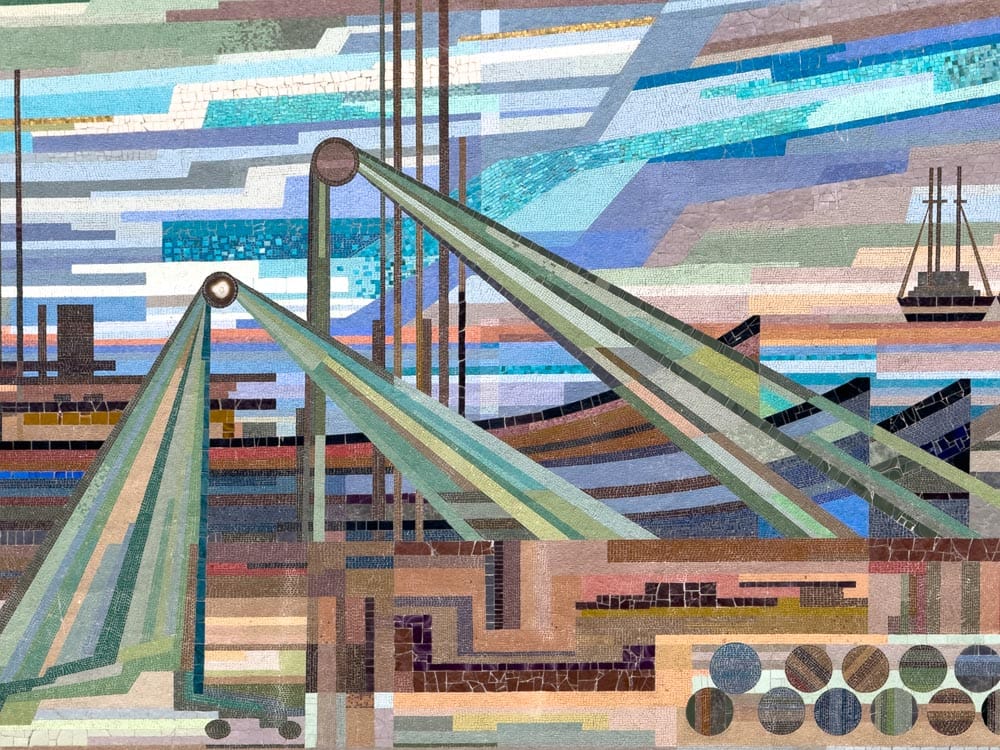
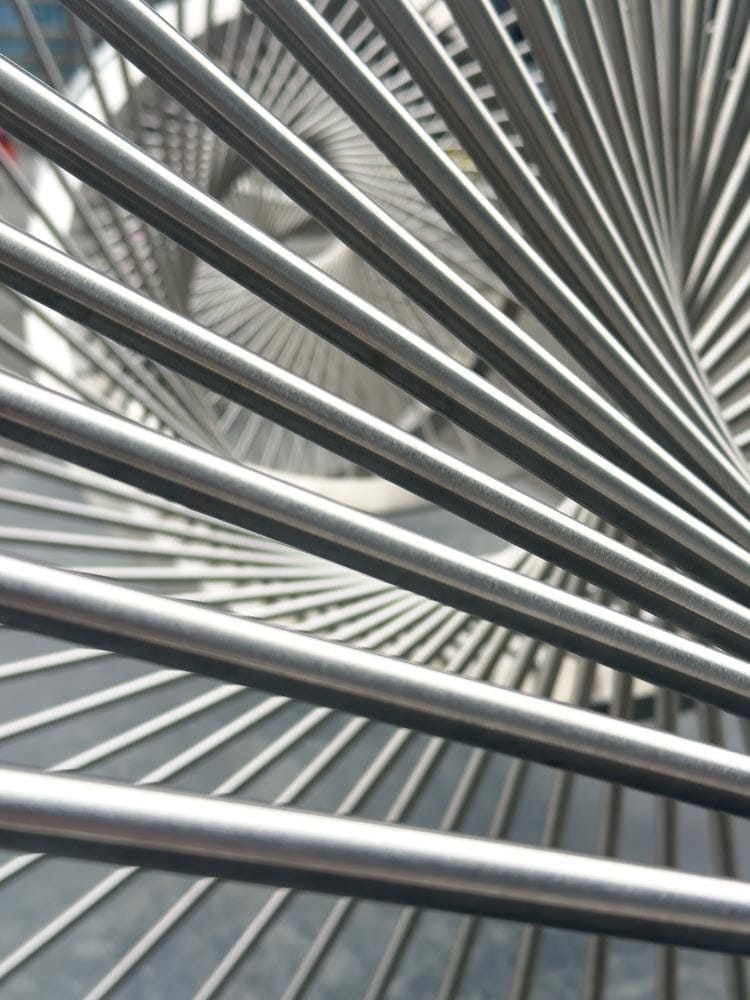
The beauty of Reykjavik.
Laundromat Conversations in Reykjavik
So we headed southwest toward Reykjavik. Surprisingly, the capital only has two laundromats. We picked the one with the best reviews and most machines. The place was packed. We landed third in line. Annika pulled out her Kindle, and I struck up conversations. Travel tip: laundromats are prime ground for bucket list upgrades.
We met a Canadian woman with a PhD in Icelandic linguistics who explained how hard it is to find work as a foreigner in Iceland without an Icelandic-sounding name. She works as a freelance translator but said it's a real hustle. Wages are low for foreigners and Iceland is expensive. We swapped thoughts on restaurant prices, like our €30 fish and chips experience in Húsavík.
Then came a 25-year-old Icelander, full of insight and good humor. He explained how Icelandic, like German, is full of compound words, those zusammengesetzten Hauptwörter. Think of “Donaudampfschifffahrtskapitänskajüte.” Town and mountain names in Iceland work the same way. For example, Reykjavík means “smoke bay,” named after the geothermal steam rising from the earth when the first settlers arrived. And you probably remember the volcano that halted European air traffic in 2010 with its tongue-twister name: Eyjafjallajökull. It literally translates to “island mountain glacier,” or in German, Inselgebirgsgletscher.
He also decoded the strange fog we’d been seeing for days: vog, a volcanic smog. The recent eruption had blasted groundwater into steam, mixing with ash and hanging in the air due to weak winds. A health warning had even been issued for people with respiratory issues.
The Decision to Go
Curious, we asked if visiting the eruption site would be inappropriate, like being a “Gaffer” (German for someone rubbernecking at accidents). He assured us the site was remote, with no rescue efforts underway. The nearby town of Grindavík had already been evacuated during the 2024 eruption, when lava literally split the town in half. He even gave us GPS coordinates for a good viewpoint.
Later, we met a mother-daughter duo on their way back to Vienna via Helsinki. We gave them Helsinki tips: the stunning Oodi library downtown and Café Regatta near the Sibelius Monument. During the conversation, in a funny twist, they recognized our truck on a parking space in Akureyri some days ago! "You're the Toy Story truck!" Small world, big red truck.
Time flew, and before we knew it, our laundry was done. Fueled by curiosity and a local’s coordinates, the next day we drove south to see the volcano.
Hiking Into Fire
We parked early near a huge, mostly empty parking lot and started the one-hour hike. Tour buses offered to drive tourists in super jeeps for €70 each. We passed. The hike gave us freedom to stay as long as we wanted.
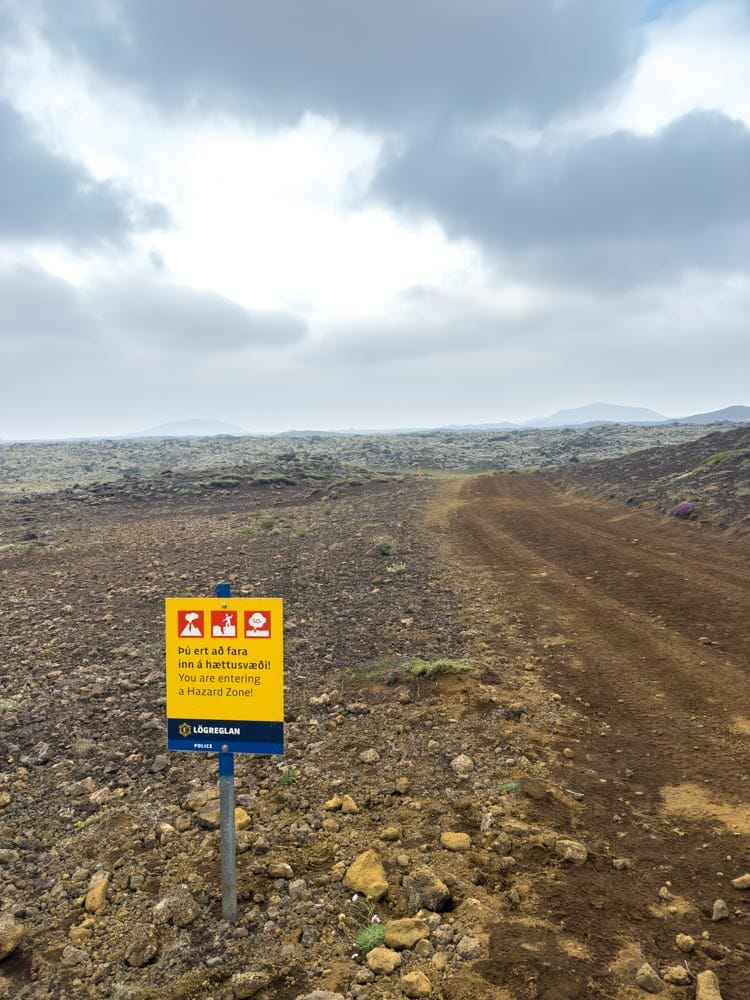
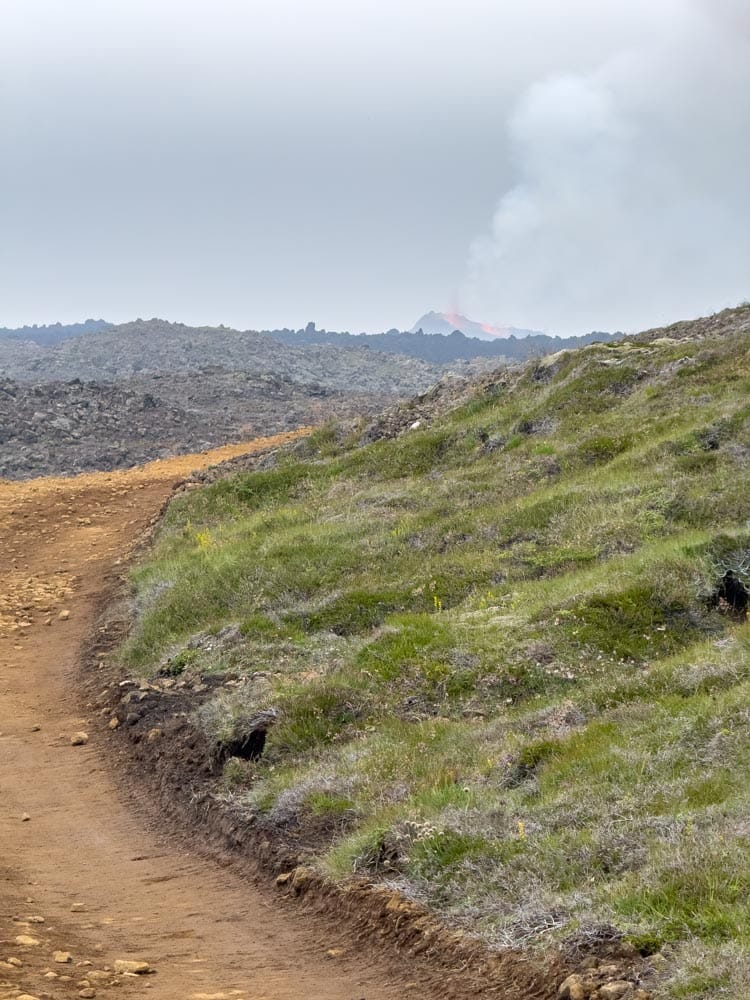
Tour groups came and went. Some got far too close, wind whipping ash and smoke around them.
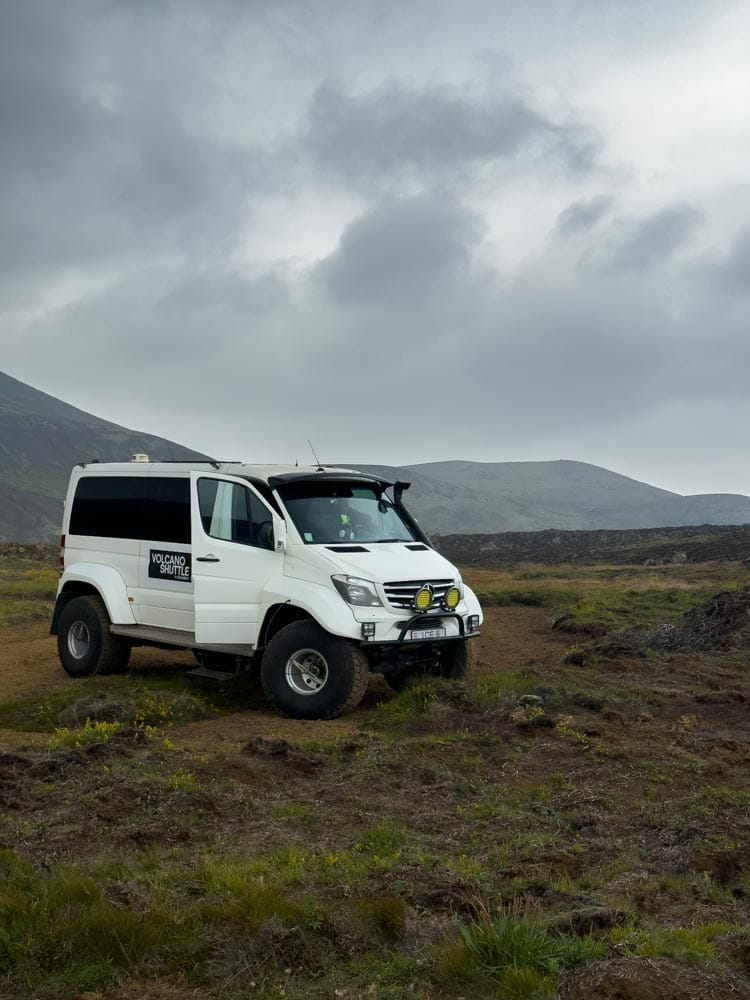
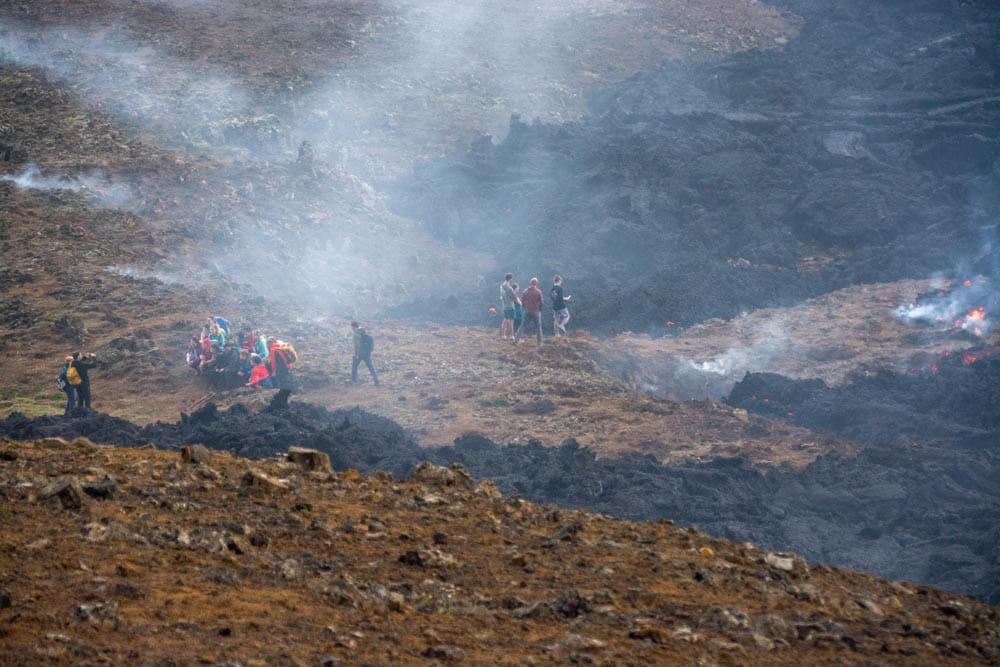
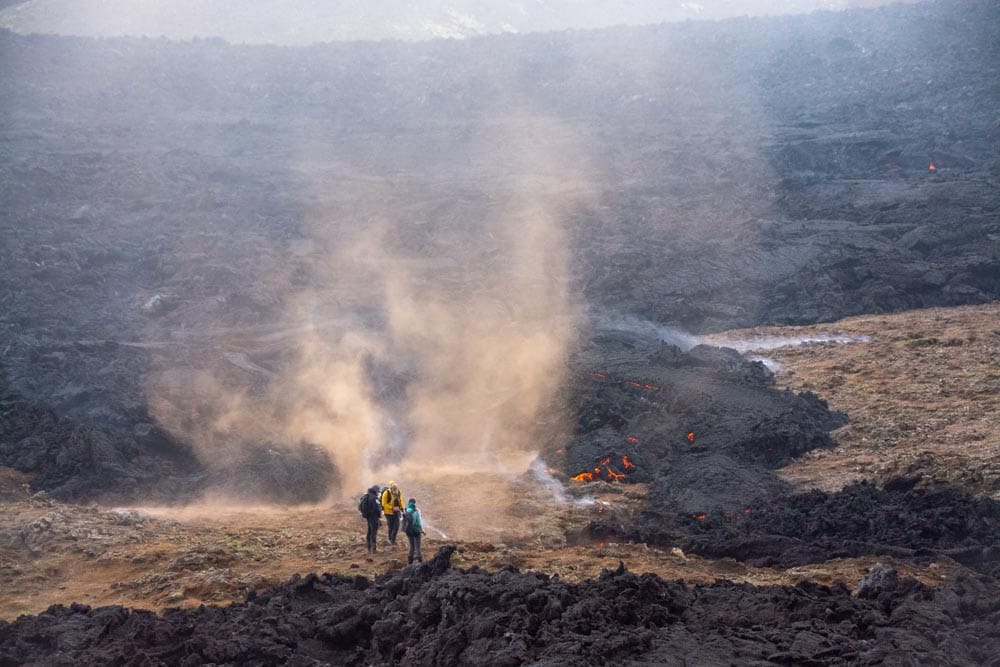
And wow, what an experience. Watching an erupting volcano feels like staring into an oversized campfire with the planet itself. There’s the crackling of cooling lava, deep grumbles from the earth, and bursts of molten rock shooting skyward. We sat there over two hours, mesmerized.
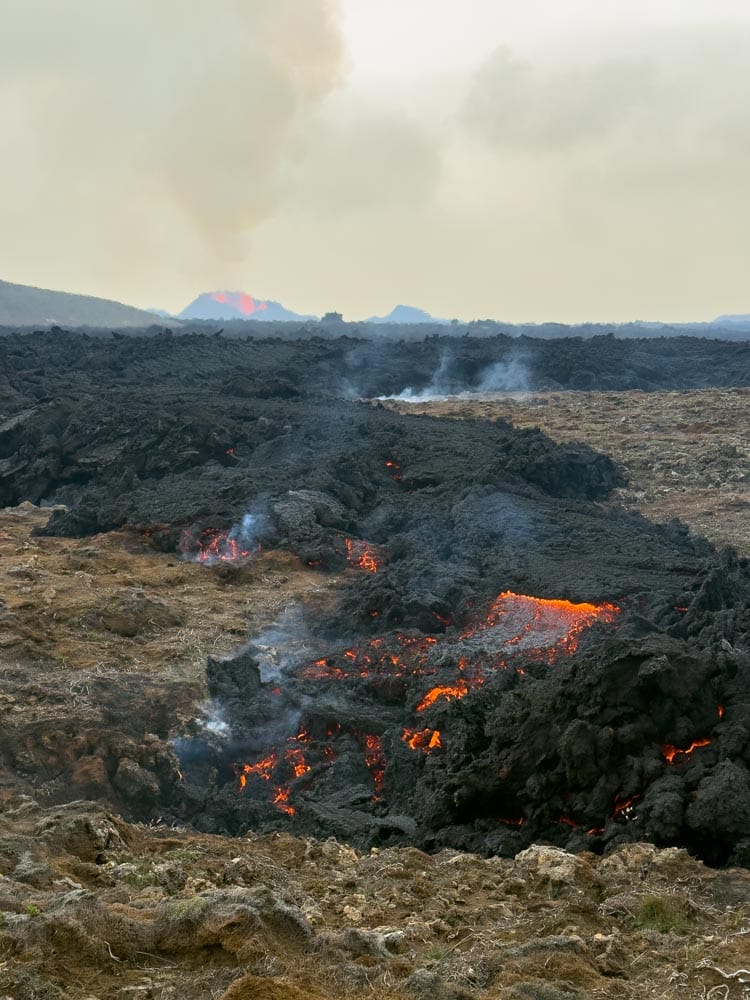

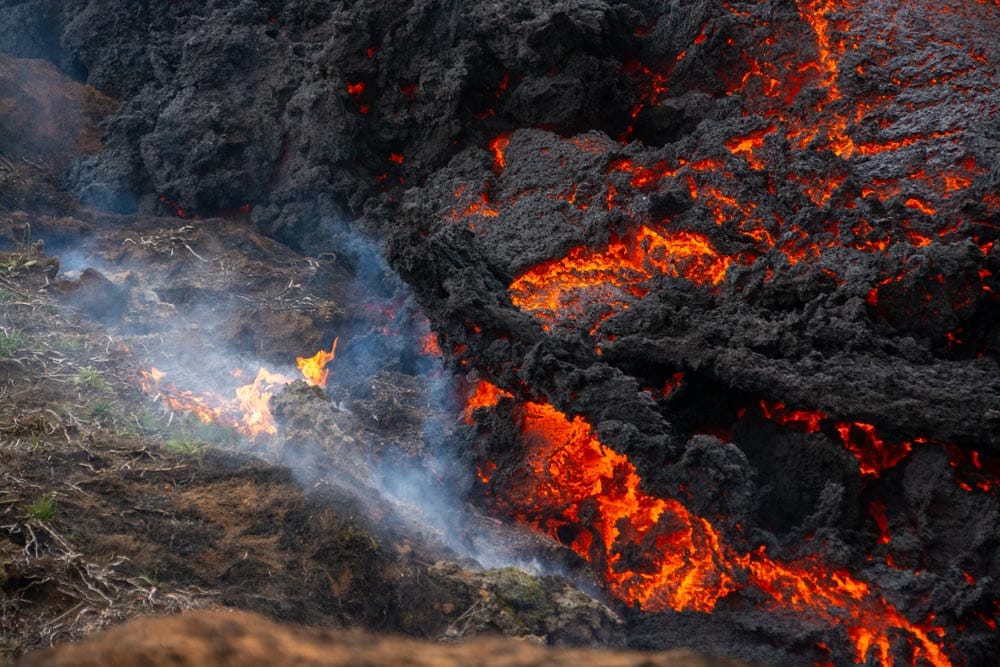
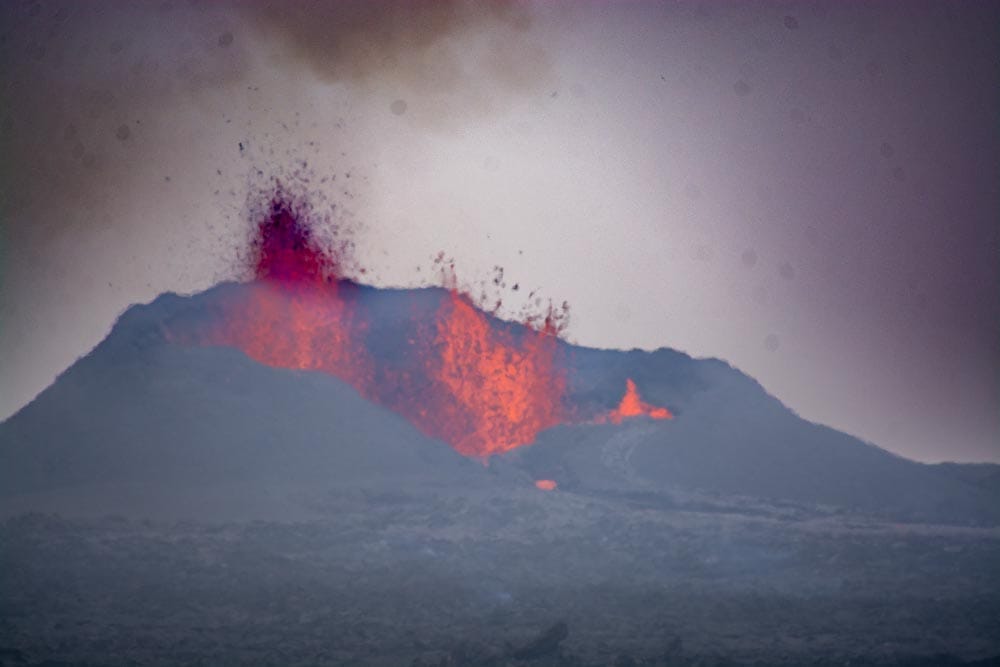
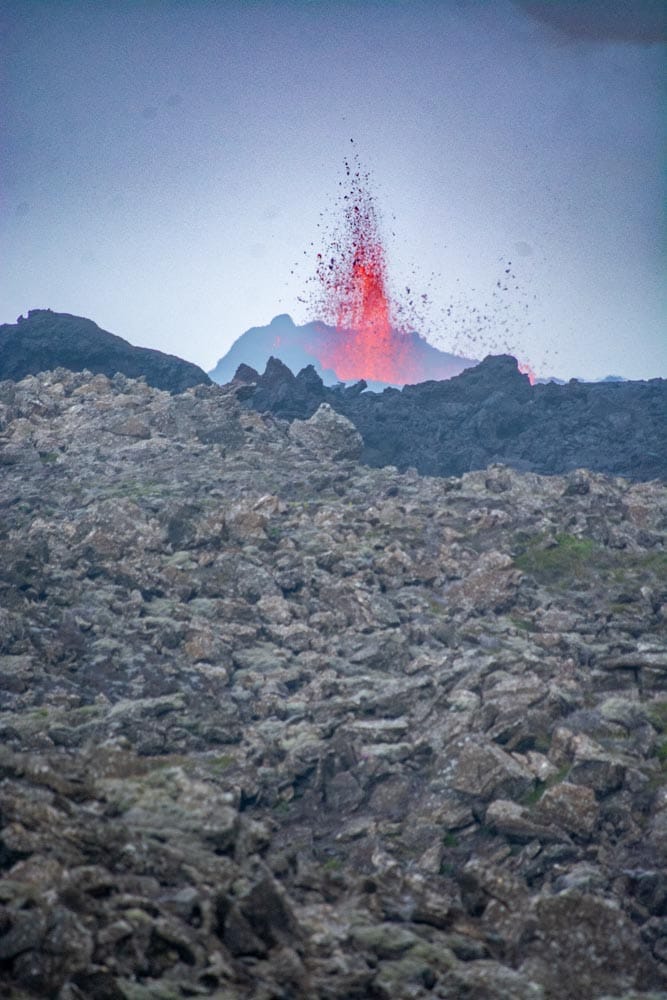
Photos don’t do it justice. Being there makes all the difference.
Grindavík: A Town Transformed
Afterward, we stopped at Grindavík. Reality hit. The 2024 eruption had not only split the town, but reshaped the land itself. Roads were torn apart. Some sections sat two meters higher than others. In 2024 one man even fell into a newly opened crack, 30 meters deep. He was never found.
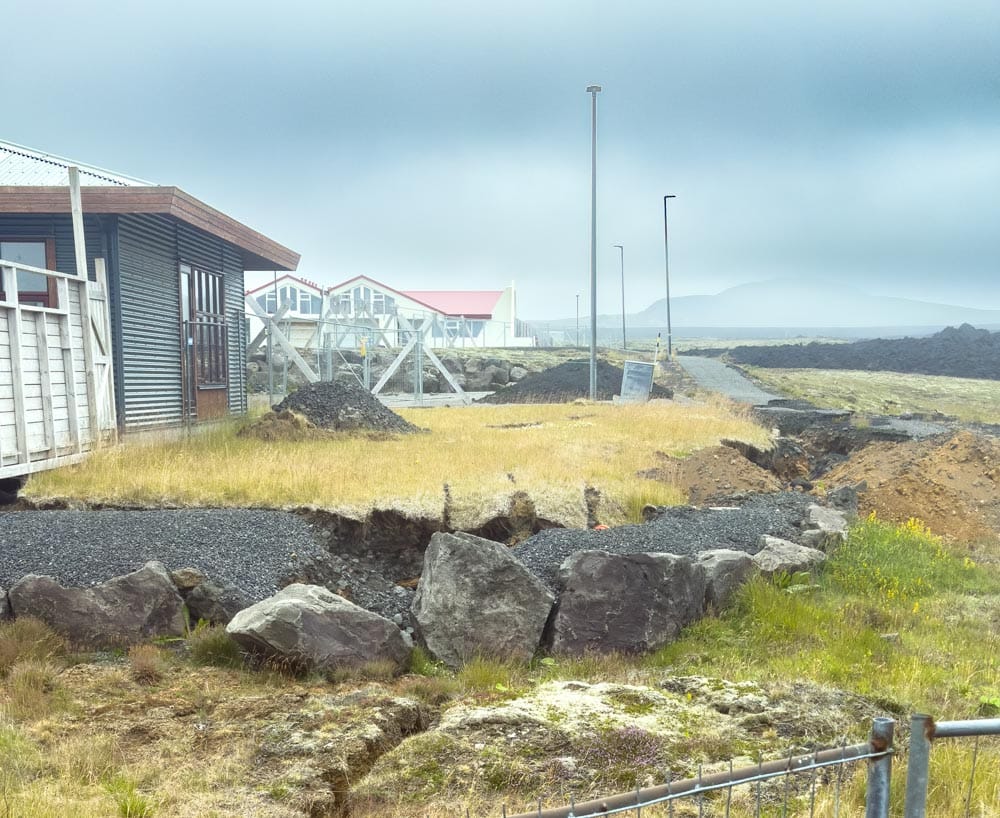
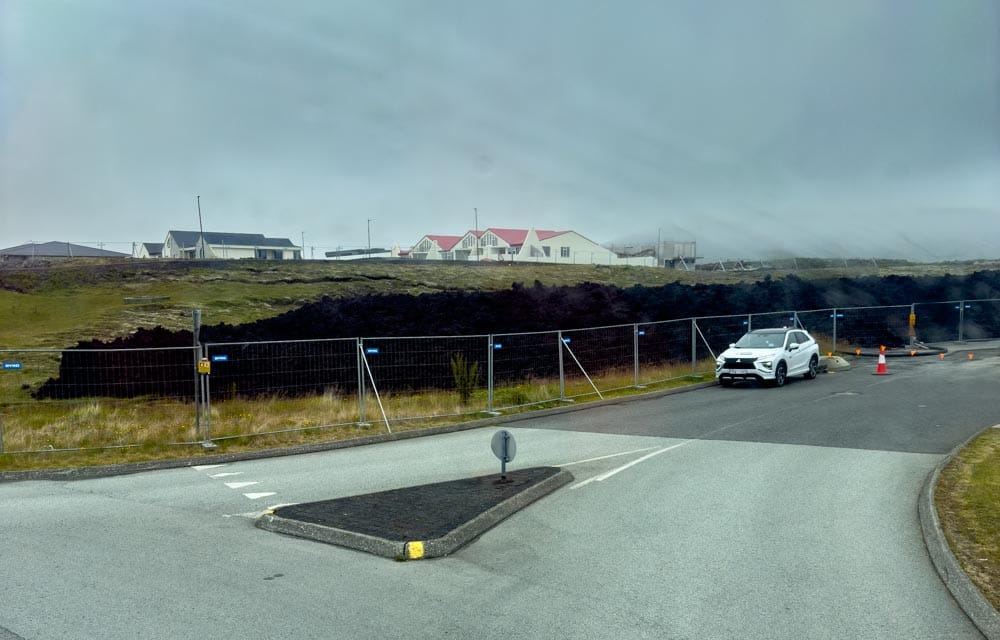
That humbles you. Nature isn’t always kind or gentle. It creates and destroys in the same breath. Volcanoes build islands and can bury homes. Our Earth has been doing this long before we arrived, and it will continue long after we’re gone. The Earth doesn’t need us to exist.
Even if you're not living from a truck, hiking into volcano zones, or crossing borders monthly, this still matters. The same planet that awes us with its power, sustains every one of us in our daily lives. We rely on its rhythms, its air, its water, and its unpredictable beauty. Respect it. Stand in awe of it. Let its rawness ground you.
Whether you're in a city or a forest, a kitchen or a canyon, take a moment to notice. When Earth speaks through fire and fog, through wind or wave, don’t just watch. Listen, learn, and remember your place in the vastness of it all.
